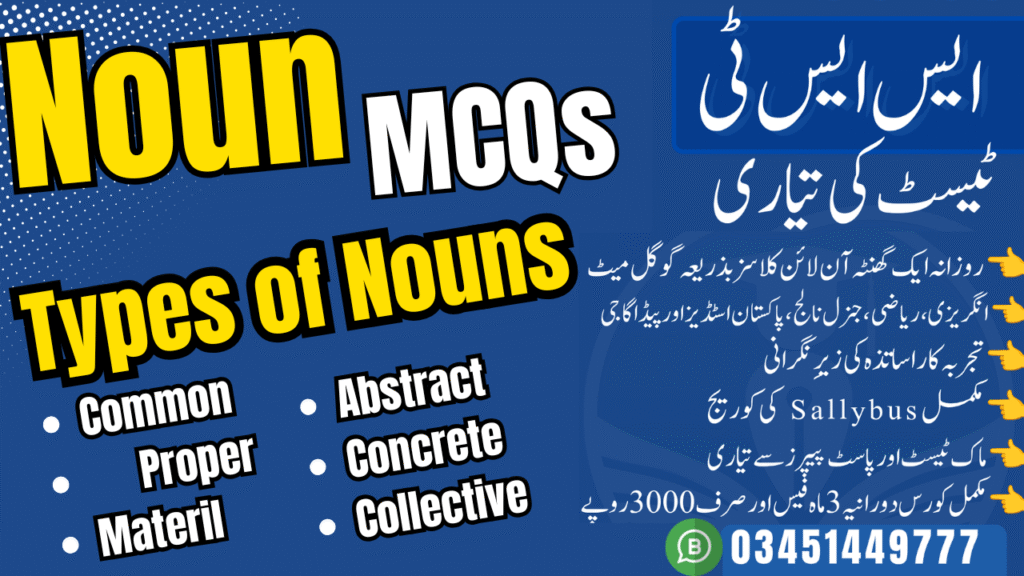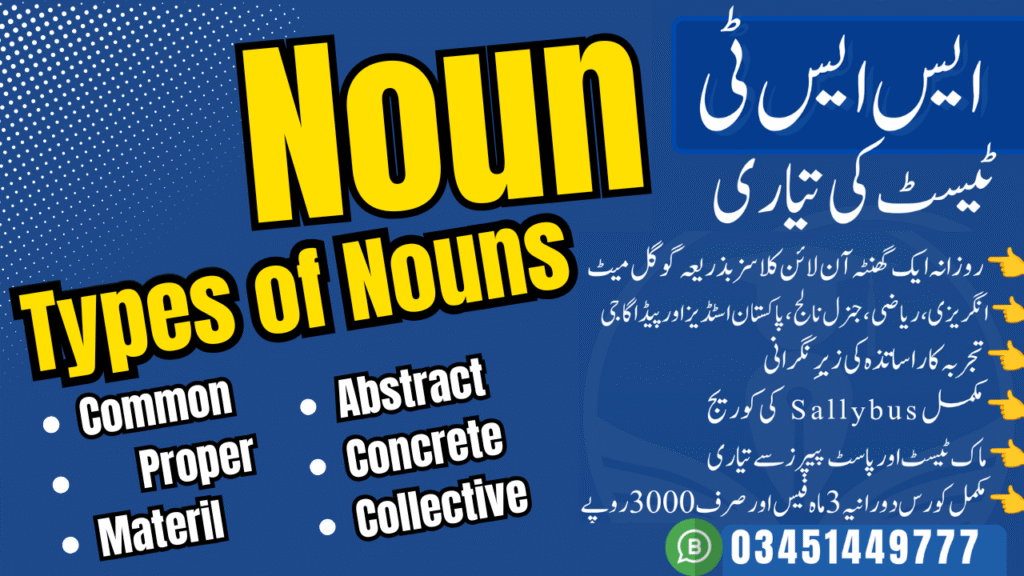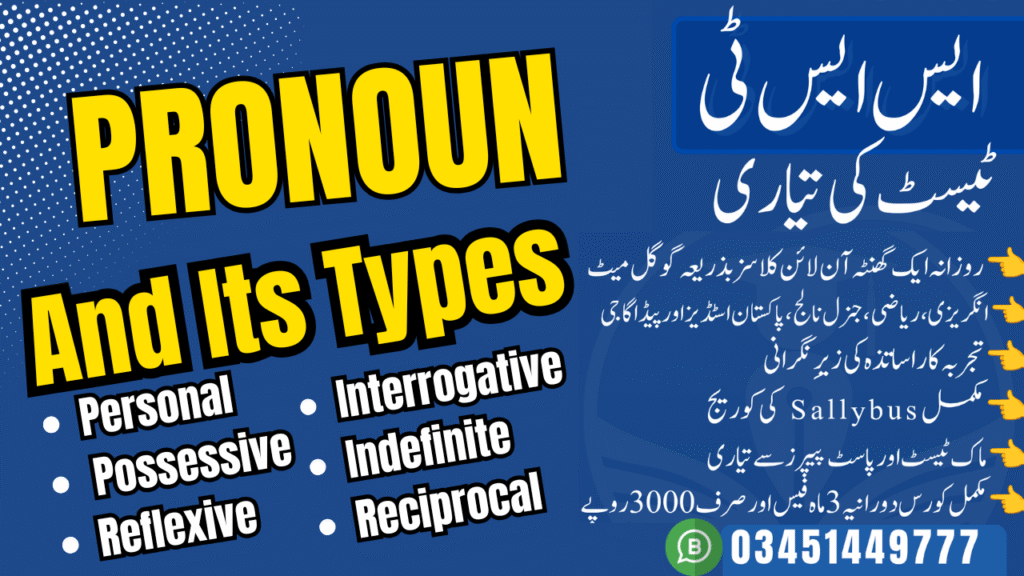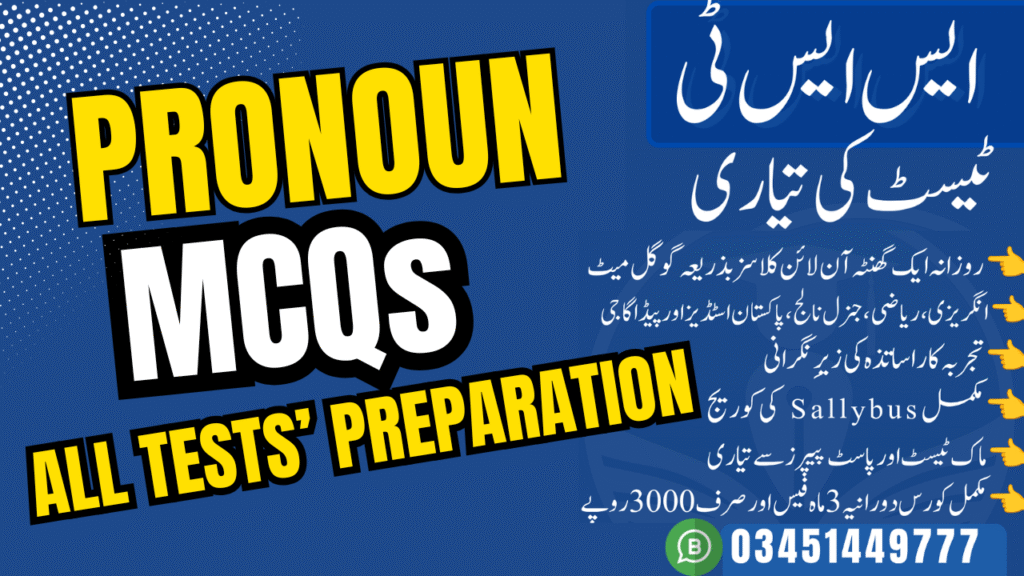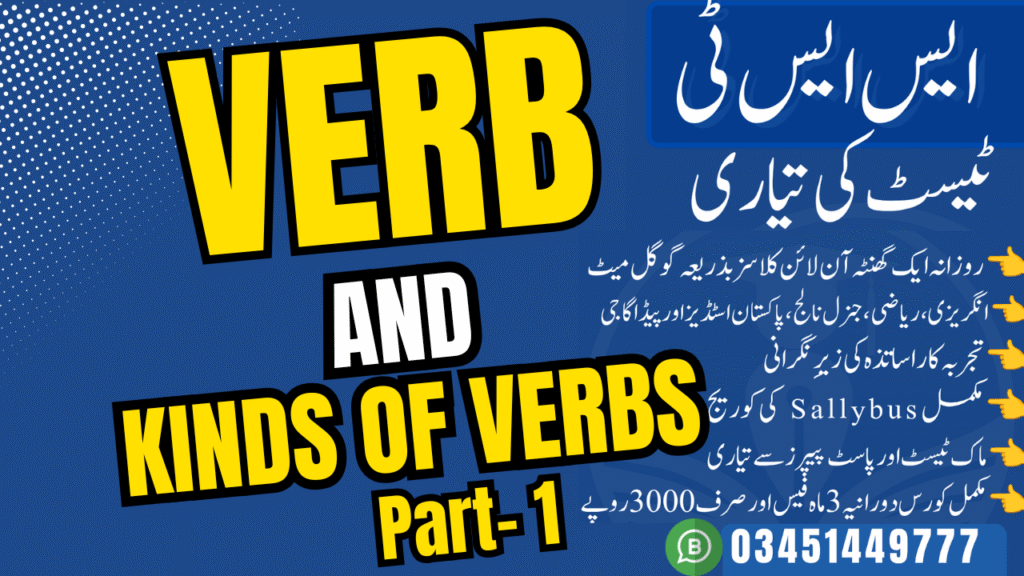What is a Preposition?
A preposition is a word that connects a noun, pronoun, or noun phrase to another word or phrase in a sentence, showing the relationship between them in terms of location, time, direction, or purpose
Also, a preposition is a word that functions as the “glue” of a sentence, creating essential connections and showing relationships between its components. The simplest way to conceptualize a preposition is as a word that indicates the relationship between a noun or pronoun and another word in the sentence. This relationship most frequently pertains to
- Location
- Time
- Direction
An effective analogy is to think of prepositions as the “The Global Positioning System (GPS)” of a sentence. They provide critical coordinates, answering fundamental questions:
- Where is something? The book is on the table.
- When is it happening? We will meet at 3 PM.
- Which way is it going? She walked to the store.
These examples show how prepositions provide context that would otherwise be missing, transforming ambiguous statements into clear mental images. They are the small words that carry significant weight in conveying precise meaning.
A preposition is a word or, in some cases, a group of words that links a noun, pronoun, or noun phrase to another element within the sentence. The noun or pronoun that follows the preposition is known as the object of the preposition.
This combination forms a unit called a prepositional phrase. The fundamental structure of this phrase is:
Preposition + (Modifiers) + Object
In the sentence, “The cat ran under the big, dusty bed,” the components of the prepositional phrase are clearly identifiable:
- Preposition: under
- Modifiers: the, big, dusty
- Object of the Preposition: bed
A foundational rule of prepositional grammar, and one that is critical for distinguishing prepositions from other parts of speech, is that a preposition must have an object. A word that appears to be a preposition but lacks an object is typically functioning as an adverb. This distinction is a cornerstone of accurate sentence analysis and will be explored further.
Why Are Prepositions So Important?
The significance of prepositions in English grammar cannot be overstated. Their diminutive size belies their immense functional power in shaping sentence meaning and structure.
First, prepositions are the primary tools for creating clarity and detail. They add layers of specific information that resolve ambiguity and allow for nuanced expression. Consider the statement, “The man stood the bridge.” This sentence is grammatically incomplete and confusing. The introduction of a preposition immediately clarifies the spatial relationship and creates a distinct image:
- The man stood on the bridge.
- The man stood under the bridge.
- The man stood near the bridge.
Each preposition generates a completely different scenario, demonstrating their power to precisely define relationships.
Second, prepositions are the architectural elements for building complex sentences. They are the “glue” that connects nouns and phrases, enabling writers to move beyond simple Subject-Verb-Object constructions and weave together more sophisticated and elaborate ideas.
Third, their function extends beyond the physical and temporal to encompass logical relationships. Prepositions are essential for expressing abstract connections such as purpose (for), possession (of), reason (because of), agency (by), and manner (with), making them important for constructing complex arguments and explanations.
Preposition vs. Adverb
One of the most common areas of confusion for learners is distinguishing between prepositions and adverbs, especially since many words can function as both. The definitive factor that separates these two parts of speech is the presence or absence of an object.
The golden rule is as follows: A preposition always governs an object—a noun, pronoun, or noun phrase that follows it and completes its meaning. An adverb, by contrast, modifies a verb, an adjective, or another adverb and does not take an object.
This principle covers an important concept in grammar: a word’s classification is determined not by an inherent, fixed identity but by its function within a specific sentence. Teaching students to analyze a word’s role—specifically, to search for a grammatical object—is a more reliable and advanced approach than simply having them memorize lists of words. This method shifts the learner’s focus from rote identification to genuine syntactical analysis.
For example, words like down, in, before, and after can change their function based on the sentence’s structure.
The following table provides a side-by-side comparison to illustrate this functional difference:
| Sentence | Word | Part of Speech | Analysis |
| She looked up the chimney. | up | Preposition | The word “up” has a direct object: “the chimney.” The entire unit, “up the chimney,” is a prepositional phrase showing direction. |
| She looked up. | up | Adverb | The word “up” has no object. It modifies the verb “looked,” answering the question “where?” and functioning independently. |
| He fell down the stairs. | down | Preposition | The word “down” governs the object “the stairs.” The phrase “down the stairs” describes where he fell. |
| He fell down. | down | Adverb | The word “down” lacks an object. It modifies the verb “fell” and stands alone as a modifier. |
| We met after the class. | after | Preposition | The word “after” is followed by its object, “the class,” indicating when the meeting occurred. |
| They arrived soon after. | after | Adverb | The word “after” has no object. It modifies the verb “arrived,” specifying the time of arrival in relation to a previously mentioned event. |
Consistently applying the “look for the object” test, you can accurately differentiate between these two grammatical functions.
Classifying Prepositions
To manage the extensive number of prepositions in English, it is useful to organize them into logical categories. A dual-classification system
- —first by grammatical structure and then….
- by semantic function….
Provides learners with two robust frameworks for understanding, recalling, and correctly applying prepositions.
Classification by Structure (Part 1)
This classification method groups prepositions based on their morphological form, from single words to conjoined units.
1. Simple Prepositions
These are single-word prepositions and represent the most common and foundational category.
- Examples: in, on, at, by, for, from, of, to, with, over, under, through, since.
2. Double Prepositions
These are formed by joining two simple prepositions to create a single new word. They are often used to indicate direction or a more complex spatial relationship than a simple preposition alone can convey.
- Examples: into, onto, upon, without, within, throughout, inside, outside.
- Sentence Examples:
- The cat jumped onto the counter.
- He walked into the room.
Classification by Structure (Part 2)
This section covers prepositions composed of multiple distinct words that function as a single grammatical unit.
3. Compound / Phrasal Prepositions
These consist of two or more words that work together to function as a single preposition. This category includes a wide range of common expressions.
- Two-Word Examples: according to, because of, due to, instead of, next to, prior to, as for.
- Three-Word Examples: in front of, in spite of, on behalf of, in addition to, by means of.
- Sentence Examples:
- According to the forecast, it will rain tomorrow.
- He succeeded in spite of the numerous setbacks.
4. Participle Prepositions
This is a special class of prepositions that have the form of a present participle (-ing) or past participle (-ed) but function grammatically as prepositions.
- Examples: concerning, considering, during, following, given, including, regarding, pending.
- Sentence Examples:
- Regarding your proposal, we have reached a decision.
- Considering her lack of experience, she performed remarkably well.
It is important to note that grammatical terminology for these multi-word forms can be inconsistent across different resources. Terms like “compound,” “phrasal,” and “complex” are sometimes used interchangeably, which can create confusion. A more effective pedagogical approach is to de-emphasize these specific labels and instead focus on the concept of functional unity. The important skill for the learner is to recognize that a group of words like “in front of” acts as a single, inseparable prepositional unit that governs an object, rather than getting bogged down in trying to apply a precise but disputed terminological label.
Classification by Function (Big Three)
The most intuitive way to learn and use prepositions is by understanding their meaning or function within a sentence. The three most common functional categories relate to place, time, and direction.
1. Prepositions of Place / Location
These prepositions answer the question “Where?” and describe a static position. The three most fundamental prepositions of place are
at, on, and in, which are used with varying degrees of specificity.
- At: Used for a specific point, address, or public place/event (at the corner, at my house, at the concert).
- On: Used for a surface, floor, or street (on the desk, on the second floor, on Oxford Street).
- In: Used for an enclosed space or a large geographical area (in the car, in the classroom, in Paris, in France).
- Other Examples: under, above, over, below, beside, near, between (for two items), among (for more than two items), behind, in front of.
2. Prepositions of Time
These prepositions answer the question “When?” and situate an event in time. The same core prepositions—
at, on, in—are used again, but with temporal meanings.
- At: Used for a precise, specific time (at 7:30 PM, at noon, at the moment).
- On: Used for specific days and dates (on Sunday, on my birthday, on October 31st).
- In: Used for longer, non-specific periods such as months, years, seasons, decades, and centuries (in May, in 1999, in the summer, in the 21st century).
- Other Examples: since (from a specific point in the past), for (over a duration of time), during (throughout a period), before, after, until, by (not later than).
3. Prepositions of Direction / Movement
These prepositions answer the questions “Where to?” or “Which way?” and always imply motion from one point to another.
- Examples: to, from, towards, across, through, over, up, down, into, onto, around.
- A critical distinction exists between prepositions of place and prepositions of direction, particularly with pairs like in/into and on/onto. The addition of “-to” signifies movement.
- He is in the office. (Location) vs. He walked into the office. (Movement).
- The documents are on the desk. (Location) vs. She placed the documents onto the desk. (Movement).
- Top (Widest Section) – IN: Used for the largest, most general locations and time periods (e.g., countries, cities; centuries, years, months).
- Middle Section – ON: Used for more specific locations and times (e.g., streets, surfaces; days, dates).
- Bottom (Point) – AT: Used for the most specific, precise points in space and time (e.g., addresses, specific locations; clock times).
Classification by Function
Beyond the primary categories of time, place, and direction, prepositions are used to express a wide variety of other logical and abstract relationships.
- 4. Prepositions of Manner: These describe how an action is performed, answering the question “How?”.
- Examples: by, with, in, like, as.
- Sentences: She spoke with confidence. They traveled by bus. He works like a machine.
- 5. Prepositions of Agent and Instrument: These identify the doer of an action (agent) or the tool used to perform it (instrument).
- Agent: The preposition by is typically used to indicate the agent in a passive voice construction. Example: The Mona Lisa was painted by Leonardo da Vinci.
- Instrument: The preposition with is used to indicate the tool or instrument. Example: He opened the lock with a key.
- 6. Prepositions of Cause, Reason, and Purpose: These prepositions explain why an action occurs.
- Cause/Reason: because of, due to, on account of, from, out of, through. Example: The match was postponed due to heavy rain.
- Purpose: for, to. Example: I am saving money for a new car.
- 7. Prepositions of Possession: These indicate ownership, belonging, or a relationship between two nouns.
- Examples: of, with, to.
- Sentences: The cover of the book. The woman with the glasses. This jacket belongs to me.
- 8. Prepositions of Comparison and Contrast: These are used to show similarities, differences, or concessions between entities.
- Comparison: like, as, than. Example: Her voice sounds like velvet. She is smarter than I am.
- Contrast/Concession: despite, in spite of, unlike, but. Example: Despite his injury, he finished the race.
Chart of Prepositions by Function
To consolidate this information, a comprehensive reference chart is an invaluable tool. It organizes a wide array of prepositions according to their primary semantic function, transforming a large body of information into a practical and accessible resource. This allows learners to quickly identify appropriate prepositions to express a specific intended meaning, moving from passive knowledge to active application.
| Function | Prepositions | Example Sentence |
| Place | in, on, at, under, over, beside, between, among, near, above, below | The keys are on the table. |
| Time | in, on, at, since, for, during, until, by, after, before | We will finish the project by 5 PM. |
| Direction | to, from, into, onto, towards, across, through, up, down, around | She walked towards the main exit. |
| Manner | with, by, in, like, as | He accepted the award with great humility. |
| Agent | by | The play was written by William Shakespeare. |
| Instrument | with, by | Please cut the paper with scissors. |
| Purpose | for, to | I am studying hard for the final exam. |
| Cause/Reason | because of, due to, from, through, out of | We stayed home due to the severe storm. |
| Possession | of, with, to | She is a good friend of mine. |
| Comparison | like, as, than | You are acting like a child. |
| Contrast | despite, in spite of, unlike, but | Despite the constant noise, I managed to fall asleep. |
Rules, Usage, and Common Mistakes
This module transitions from classification to practical application, addressing the core syntactic rules that govern preposition use, identifying common errors made by learners, and exploring the nuances of formal and informal usage.
Rules of Preposition Usage
While prepositions are often governed by idiomatic use, several fundamental grammatical rules are non-negotiable.
- Rule 1: Prepositions Require an Object. As established previously, a preposition must be followed by a noun, pronoun, or gerund (-ing verb form acting as a noun) that serves as its object. When a pronoun serves as the object, it must be in the objective case (me, you, him, her, it, us, them).
- Correct: The package was delivered to me.
- Correct: The secret is between him and her.
- Incorrect: The secret is between he and she.
- Rule 2: Distinguish ‘to’ as a Preposition from ‘to’ as an Infinitive Marker. The word ‘to’ can be a source of confusion. When ‘to’ is a preposition, it is followed by a noun or gerund. When it is part of an infinitive, it is followed by the base form of a verb.
- Preposition ‘to’: I look forward to your presentation. (Presentation = noun). I am accustomed to working long hours. (Working = gerund).
- Infinitive ‘to’: I want to present my findings. (Present = verb). I used to work long hours. (Work = verb).
- Rule 3: Standard Placement. A preposition typically precedes its object. However, this order can be inverted, most commonly in questions where the object is an interrogative pronoun (who, what, which) placed at the beginning of the sentence.
- Standard: I put the book on the table.
- Inverted (Question): What are you talking about? (The object of ‘about’ is ‘What’).
Common Mistakes (Part 1)
Learners frequently struggle with specific pairs of prepositions. Addressing these common points of confusion directly can significantly improve accuracy.
- In vs. At (Location): The distinction lies in specificity. Use ‘at’ for a specific point, address, or event. Use ‘in’ for an enclosed space or a larger geographical area.
- Mistake: I am waiting in the bus stop.
- Correction: I am waiting at the bus stop.
- Mistake: She is at the car.
- Correction: She is in the car.
- On vs. In (Time): Use ‘on’ for specific days and dates. Use ‘in’ for longer, less specific periods like months, seasons, and years.
- Mistake: My birthday is on October.
- Correction: My birthday is in October.
- Mistake: The conference is in Friday.
- Correction: The conference is on Friday.
- For vs. Since (Time): Use ‘for’ to express a duration or period of time. Use ‘since’ to indicate the starting point of a period that continues to the present.
- Mistake: I have been studying since three hours.
- Correction: I have been studying for three hours.
- Mistake: He has worked here for 2020.
- Correction: He has worked here since 2020.
- In vs. On (Transportation): The convention depends on the type of vehicle. Use ‘in’ for smaller, private vehicles where one typically sits inside (e.g., car, taxi, van). Use ‘on’ for larger, public modes of transport that one can stand and walk around on (e.g., bus, train, airplane, ship, subway).
- Mistake: I left my wallet on the taxi.
- Correction: I left my wallet in the taxi.
- Mistake: We met in the bus.
- Correction: We met on the bus.
Common Mistakes (Part 2)
Beyond confusing pairs, other common errors involve redundancy and incorrect collocations.
- Unnecessary (Redundant) Prepositions: Some verbs in English are transitive and take a direct object without a preposition. Learners, sometimes influenced by their first language, may add an unnecessary preposition.
- Mistake: We need to discuss about the budget.
- Correction: We need to discuss the budget.
- Mistake: She entered into the room. (While ‘enter into an agreement’ is correct, for physical entry, ‘into’ is redundant).
- Correction: She entered the room.
- Incorrect Verb/Adjective Collocations: As will be detailed in Module 4, many words are idiomatically paired with specific prepositions. Using the wrong one is a frequent error.
- Mistake: The outcome depends of many factors.
- Correction: The outcome depends on many factors.
- Mistake: I am good in playing chess.
- Correction: I am good at playing chess.
Ending a Sentence with a Preposition
A persistent piece of grammatical folklore is the “rule” that one must never end a sentence with a preposition. This prescriptive rule is largely a myth, originating in the 17th century from grammarians who attempted to impose the rules of Latin—a language in which prepositions cannot be stranded at the end of a sentence—onto English.
The modern, descriptive understanding is that the placement of a preposition is a matter of stylistic register and naturalness, not absolute correctness.
- Informal and Natural Usage: In everyday speech and informal writing, ending a sentence with a preposition is extremely common, perfectly acceptable, and often sounds more natural. This is especially true for questions.
- Example: What are you looking for?
- Example: She is someone you can rely on.
- Formal and Stilted Usage: Recasting a sentence to avoid a terminal preposition often results in a sentence that is grammatically correct but sounds awkward, stilted, or overly formal.
- Example: For what are you looking?
- Example: She is someone on whom you can rely.
The pedagogical recommendation is to teach students that in formal academic and professional writing, it is often advisable to avoid ending a sentence with a preposition, but only if the alternative phrasing sounds natural and clear.34 Forcing a change can lead to clumsy constructions, famously lampooned in a quote often attributed to Winston Churchill: “This is the type of arrant pedantry up with which I will not put”.
The true grammatical error is not the stranded preposition but the dangling or redundant preposition—an unnecessary preposition added to the end of a sentence.
- Incorrect: Where is the library at?
- Correct: Where is the library?
Module 4: Collocations and Phrases
This module explores how prepositions function within the natural flow of language, not as isolated words but as integral components of fixed expressions (collocations) and grammatical structures (prepositional phrases). This perspective helps learners move from memorizing individual words to mastering lexical chunks.
Idiomatic Usage: Prepositional Collocations
In English, a vast number of verbs, nouns, and adjectives are idiomatically and conventionally followed by a specific preposition. These fixed or semi-fixed combinations are known as collocations. There are few logical rules governing these pairings; they are a feature of usage that must be learned and memorized as complete phrases.
The three main types of prepositional collocations are Verb + Preposition, Adjective + Preposition, and Noun + Preposition.
Verb + Preposition Combinations
Many verbs require a specific preposition to connect to their object. Changing the preposition can drastically alter the meaning (e.g., look for, look after, look into) or render the sentence incorrect. The following table presents some of the most common verb + preposition collocations.
| Verb | Preposition | Example Sentence |
| depend, rely, comment | on | You can rely on her to complete the task. |
| apologize | for (a thing) / to (a person) | He apologized for his tardiness to the committee. |
| believe, participate, succeed | in | I believe in the importance of education. |
| consist, approve, dream | of | The recipe consists of flour, sugar, and eggs. |
| protect, suffer, recover | from | This vaccine will protect you from the virus. |
| agree, deal, cope | with | I agree with your assessment of the situation. |
| listen, refer, respond | to | Please listen to the instructions carefully. |
| wait, ask, search | for | We have been waiting for this opportunity. |
Adjective + Preposition Combinations
Similarly, many adjectives are followed by a particular preposition to complete their meaning. These pairings are essential for natural-sounding English.
| Adjective | Preposition | Example Sentence |
| good, bad, terrible, brilliant | at | She is brilliant at solving complex problems. |
| interested, experienced, involved | in | He is not interested in sports. |
| afraid, proud, aware, capable | of | They are proud of their accomplishments. |
| married, similar, allergic, accustomed | to | The climate here is similar to that of my home country. |
| responsible, famous, grateful, sorry | for | The company is famous for its innovative products. |
| angry, happy, worried, excited | about (a situation) | I’m worried about the upcoming exam. |
| different, safe, free | from | This new model is very different from the previous one. |
| angry, annoyed, pleased | with (a person or thing) | The manager was pleased with the team’s performance. |
Noun + Preposition Combinations
Nouns also form strong collocations with prepositions, often to express abstract relationships. These combinations are frequently found in academic and formal writing.
| Noun | Preposition | Example Sentence |
| reason, need, demand, respect | for | There is a growing demand for sustainable energy. |
| interest, success, belief, decrease | in | There has been a significant decrease in unemployment. |
| cause, example, photo, knowledge | of | This is a classic example of medieval architecture. |
| solution, reaction, addiction, threat | to | We must find a solution to this complex problem. |
| relationship, argument, trouble, contact | with | She has a good relationship with her colleagues. |
| information, debate, report, ban | on / about | The professor gave a lecture on quantum physics. |
| difference, link, connection, bond | between | The link between diet and health is well established. |
Prepositional Phrases
As previously defined, a prepositional phrase consists of a preposition, its object, and any modifiers. The critical next step is to understand the function of these phrases within a larger sentence. A prepositional phrase almost always functions as either an adjective or an adverb, modifying another word or phrase in the sentence.
- Adjectival Phrase: When a prepositional phrase modifies a noun or pronoun, it is functioning as an adjective. It typically answers the questions “Which one?” or “What kind?” and usually follows the noun it modifies.
- Example: The student with the red backpack won the award. (Which student? The one with the red backpack.).
- Example: He read a book about ancient Rome. (What kind of book? One about ancient Rome.)
- Adverbial Phrase: When a prepositional phrase modifies a verb, an adjective, or another adverb, it is functioning as an adverb. It typically answers the questions “How?”, “When?”, “Where?”, or “Why?”.
- Example: The team celebrated after the victory. (When did they celebrate? After the victory.).
- Example: She walked across the stage with confidence. (Where did she walk? Across the stage.).
Prepositional Phrase vs. Adverbial Phrase
The relationship between these terms can be a source of confusion. It is crucial to clarify that an “adverbial phrase” is not a structurally different entity from a prepositional phrase. Rather, “adverbial” describes the function or role that a prepositional phrase performs in a sentence.8
A useful analogy helps to illustrate this distinction:
- Think of a prepositional phrase as a person with a name (e.g., “John Smith”). This is its structural identity.
- Think of adjectival or adverbial as that person’s job title (e.g., “doctor” or “teacher”). This is its function in a particular context.
The same prepositional phrase can, in theory, perform different functions in different sentences. The key is to analyze what word the phrase is modifying.
- Example 1: The shop around the corner sells fresh bread.
- Here, the prepositional phrase “around the corner” is adjectival. It modifies the noun “shop,” telling us which shop.
- Example 2: He walked around the corner.
- Here, the same prepositional phrase “around the corner” is adverbial. It modifies the verb “walked,” telling us where he walked.
Understanding that “adverbial” is a job description for a prepositional phrase empowers students to analyze sentences based on function rather than trying to memorize separate, overlapping categories.
Module 5: Practice and Application
This module provides a series of interactive exercises designed to transition learners from theoretical knowledge to practical application. Active participation is essential for reinforcing the concepts covered in the previous modules.
Fill-in-the-Blanks
This exercise targets the correct usage of common prepositions, particularly the frequently confused pairs for time and place, as well as common collocations.
Instructions: Fill in each blank with the most appropriate preposition from the list provided (e.g., in, on, at, for, since, with, to, of, from).
- The appointment is ______ Monday ______ 11 AM. (Answer: on, at)
- I have been waiting ______ the bus ______ twenty minutes. (Answer: for, for)
- She has always been very interested ______ marine biology. (Answer: in)
- As the project manager, he is responsible ______ the entire team. (Answer: for)
- They live ______ a large house ______ the outskirts ______ the city. (Answer: in, on, of)
- He has suffered ______ chronic headaches ______ he was a teenager. (Answer: from, since)
- The key ______ success is to never give up. (Answer: to)
Correct the Error
This activity hones students’ proofreading skills and reinforces their knowledge of common prepositional mistakes.
Instructions: Identify and correct the prepositional error in each of the following sentences.
- We need to discuss about the new company policy.
- Correction: We need to discuss the new company policy. (The verb ‘discuss’ does not require a preposition.)
- My sister is married with an engineer.
- Correction: My sister is married to an engineer. (‘Married to’ is the correct collocation.)
- The package should arrive on next week.
- Correction: The package should arrive next week. (Prepositions of time like ‘on’ are typically omitted before ‘next’, ‘last’, ‘this’, ‘every’.)
- The success of our project depends of teamwork.
- Correction: The success of our project depends on teamwork. (‘Depend on’ is the correct collocation.)
- Where are you going to at?
- Correction: Where are you going? (The prepositions ‘to’ and ‘at’ are redundant in this context.)
Sentence Building
This creative exercise encourages students to actively use prepositions in context, demonstrating their understanding of the preposition’s meaning and grammatical function.
Instructions: Create a complete, meaningful sentence using the given preposition or prepositional phrase.
- Preposition: between
- Example Sentence: The small café is located between the bookstore and the bank.
- Preposition: through
- Example Sentence: The sunlight streamed through the window.
- Prepositional Phrase: in spite of
- Example Sentence: In spite of the traffic, we arrived at the airport on time.
- Preposition: towards
- Example Sentence: The hikers walked towards the summit of the mountain.
- Prepositional Phrase: according to
- Example Sentence: According to recent studies, regular exercise improves mental health.
Hands-On Activity: “Preposition Saleem Says”
This kinesthetic activity is designed to physically reinforce the meaning of prepositions of place and direction. It is particularly effective for younger learners or those who benefit from hands-on engagement.
Instructions for the facilitator: Lead a game of “Saleem Says” using commands that feature prepositions. Students should only follow the command if it is preceded by the phrase “Saleem says.”
Sample Commands:
- “Saleem says put your hands on your head.”
- “Saleem says stand beside your desk.”
- “Saleem says place your pencil under your book.”
- “Saleem says hold your hand above your chair.”
- “Saleem says walk around your table.”
- “Stand in front of your chair.”
This activity makes the abstract concepts of spatial relationships tangible and memorable, connecting the grammatical term to a physical action and location.
Module 6: Topics and Review
This final module addresses the more nuanced aspects of preposition usage, including stylistic choices in different contexts and regional variations. It concludes with a comprehensive review and assessment to consolidate learning.
Prepositions in Formal vs. Informal English
The choice of prepositions and sentence structure can significantly impact the tone and formality of writing and speech. The primary distinctions between formal and informal usage relate to the complexity of prepositional choices and the avoidance of sentence-terminal prepositions.
- Informal English: Tends to use simpler prepositions and phrasal verbs. Ending sentences with prepositions is common and sounds natural.
- Example: “We need to figure out what to do.”
- Example: “Who did you give the keys to?”
- Formal English: Prefers more precise, single-word verbs over phrasal verbs (e.g., “investigate” instead of “look into”). It often requires recasting sentences to avoid placing a preposition at the end, which can sometimes sound more sophisticated but also risks sounding unnatural if overdone.
- Example: “We must determine the correct course of action.”
- Example: “To whom did you give the keys?”
- Academic Writing: Precision is paramount in academic writing. Prepositions are used carefully to establish clear and unambiguous logical relationships between ideas.
- Examples: the relationship between two variables; the results of the study; research into the primary causes; an approach to the problem.
British vs. American English
While most preposition usage is standard across dialects, some notable differences exist between British English (BrE) and American English (AmE). Awareness of these variations is important for advanced learners and those communicating with international audiences.
| Concept | American English (AmE) | British English (BrE) |
| Weekend | on the weekend | at the weekend |
| Time Period | Monday through Friday | Monday to Friday |
| Difference | different from / than | different from / to |
| Hospital | in the hospital | in hospital |
| Directional Suffix | toward | towards |
| Vacation/Holiday | on vacation | on holiday |
Summary and Review
This section provides a concise summary of the most critical concepts for students to retain.
5 Rules to Always Remember:
- A preposition must have an object. If a word from the preposition list does not have a noun or pronoun object, it is likely functioning as an adverb.
- Use objective pronouns after prepositions. Always use me, him, her, us, and them as the object of a preposition, not I, he, she, we, or they.
- Master the “Big Three” for Time and Place. Use the inverted pyramid model: IN for large, general periods/areas; ON for more specific days/dates/surfaces; AT for precise points in time/space.
- Learn Collocations as Phrases. Many verbs, nouns, and adjectives have specific “partner” prepositions. Memorize them together as a single lexical unit (e.g., rely on, interested in, reason for).
- Ending a Sentence with a Preposition is Usually Acceptable. This is perfectly normal in informal contexts. In formal writing, avoid it only when you can rephrase the sentence naturally and without awkwardness.
Assessment (Part 1: MCQs)
Instructions: Choose the best option to complete the sentence.
- She is exceptionally skilled ___ negotiating contracts.
(a) in
(b) on
(c) at
(d) with - We have been living in this city ___ more than a decade.
(a) for
(b) since
(c) at
(d) during - Please do not be angry ___ me; it was an honest mistake.
(a) about
(b) on
(c) for
(d) with - This masterpiece was painted ___ a relatively unknown artist.
(a) with
(b) by
(c) from
(d) of - To get to the other side of the river, you must walk ___ the bridge.
(a) through
(b) across
(c) into
(d) past
Assessment (Part 2: Application)
Instructions: Answer the following questions to demonstrate your understanding of preposition usage.
Short Answer Questions:
- Explain the functional difference between the prepositions in these two sentences: “He is in the building” and “He ran into the building.”
- Answer: In “He is in the building,” ‘in’ is a preposition of place, indicating a static location. In “He ran into the building,” ‘into’ is a preposition of direction, indicating movement from outside to inside.
- Rewrite the following formal question in a more natural, informal way: “About what are you thinking?”
- Answer: “What are you thinking about?”
Real-Life Task:
- Describe the location of three objects in your immediate environment relative to each other. Your description must use at least five different prepositions of place.
- Example Answer: “My laptop is on the desk, in front of me. A cup of coffee is beside it, and a notebook is under a pile of papers to my left.”
Preposition: Types, Pules & Examples
By Arshad Yousafzai
Loading question…

